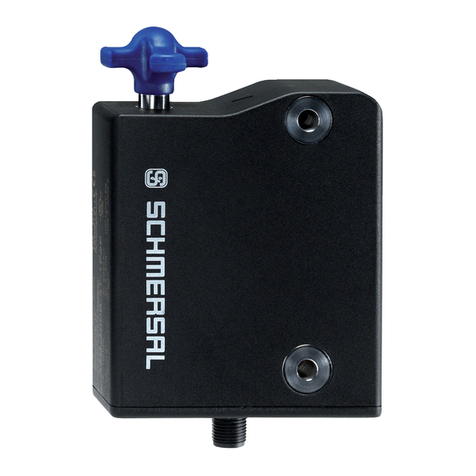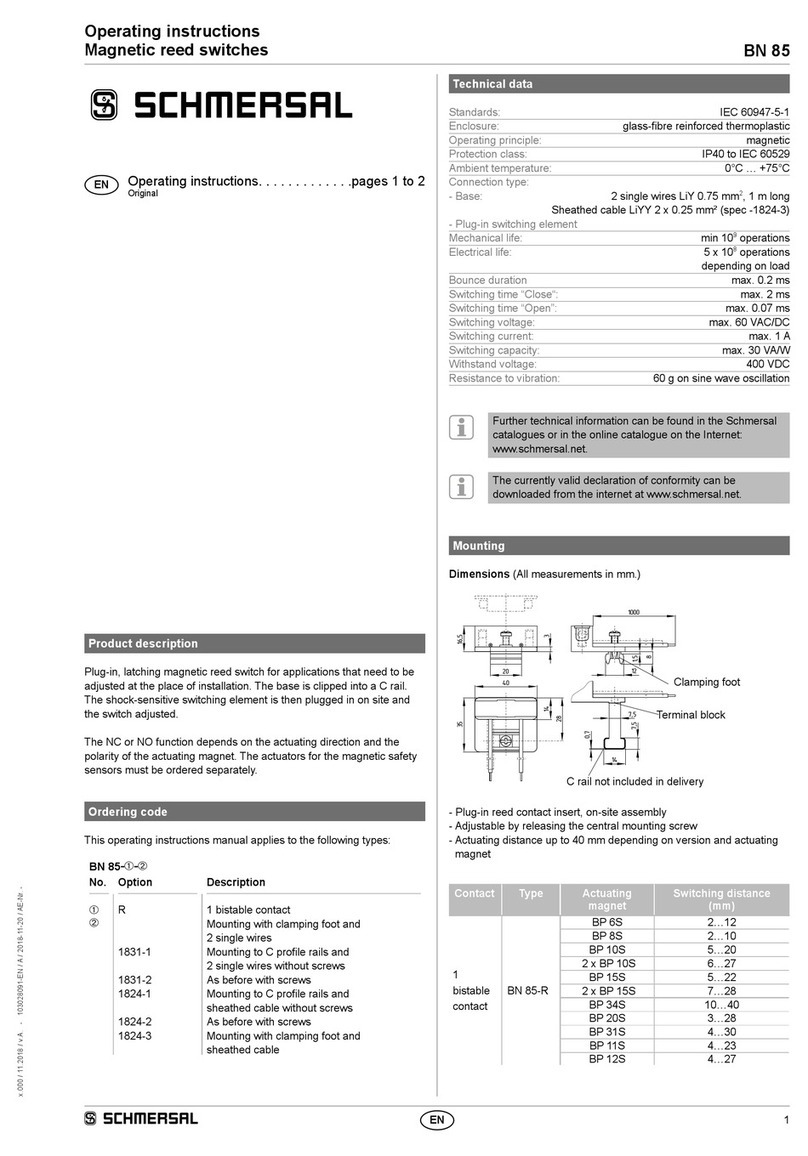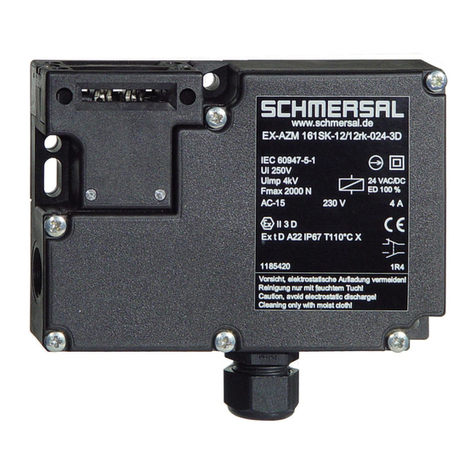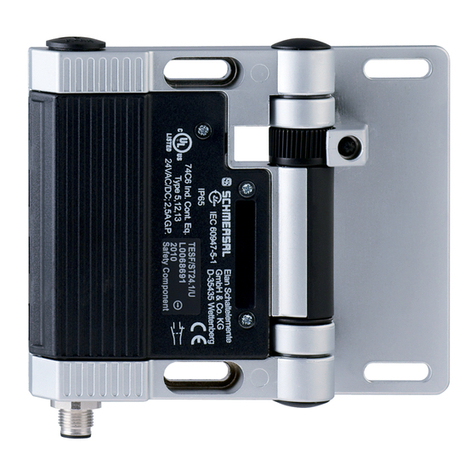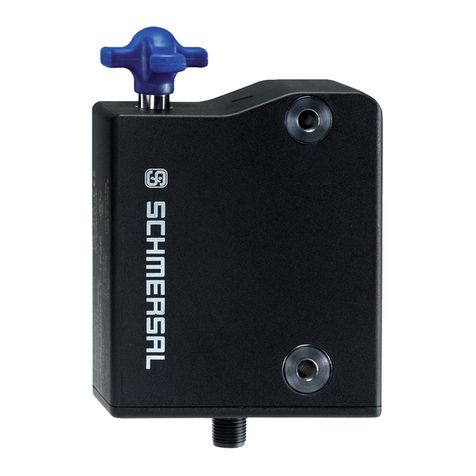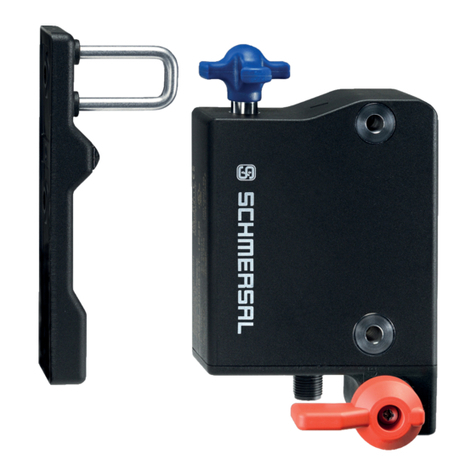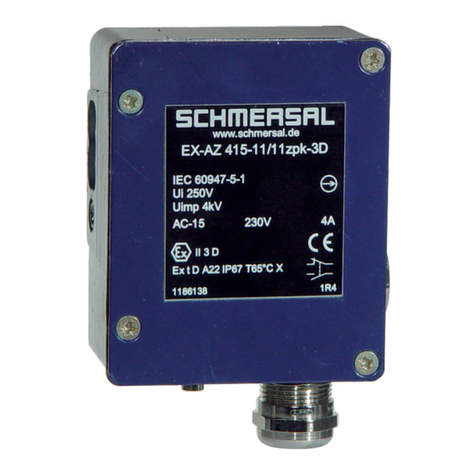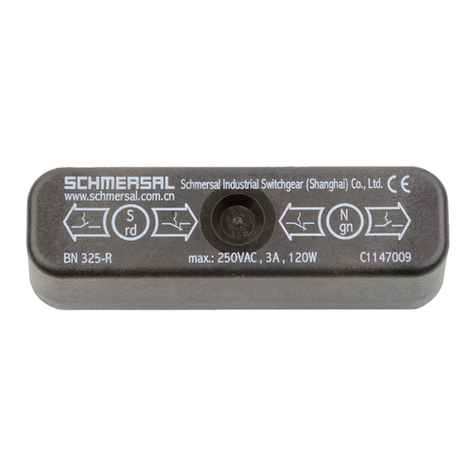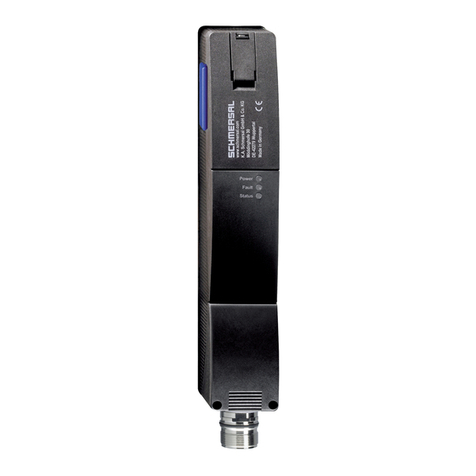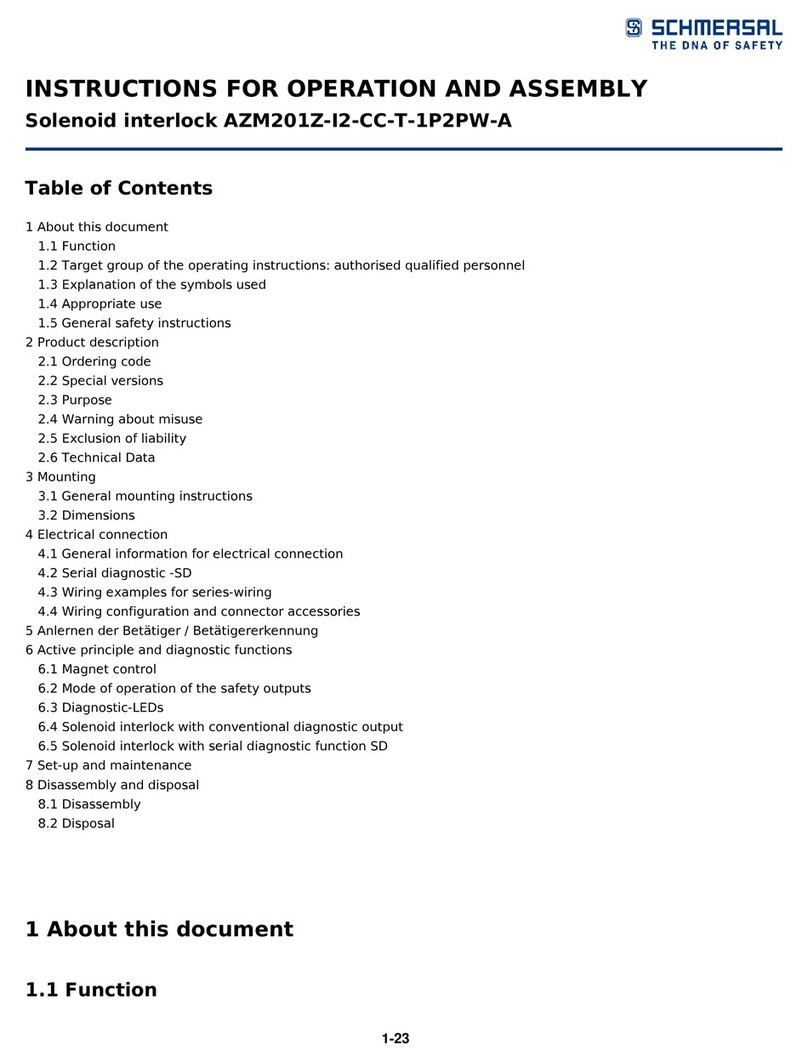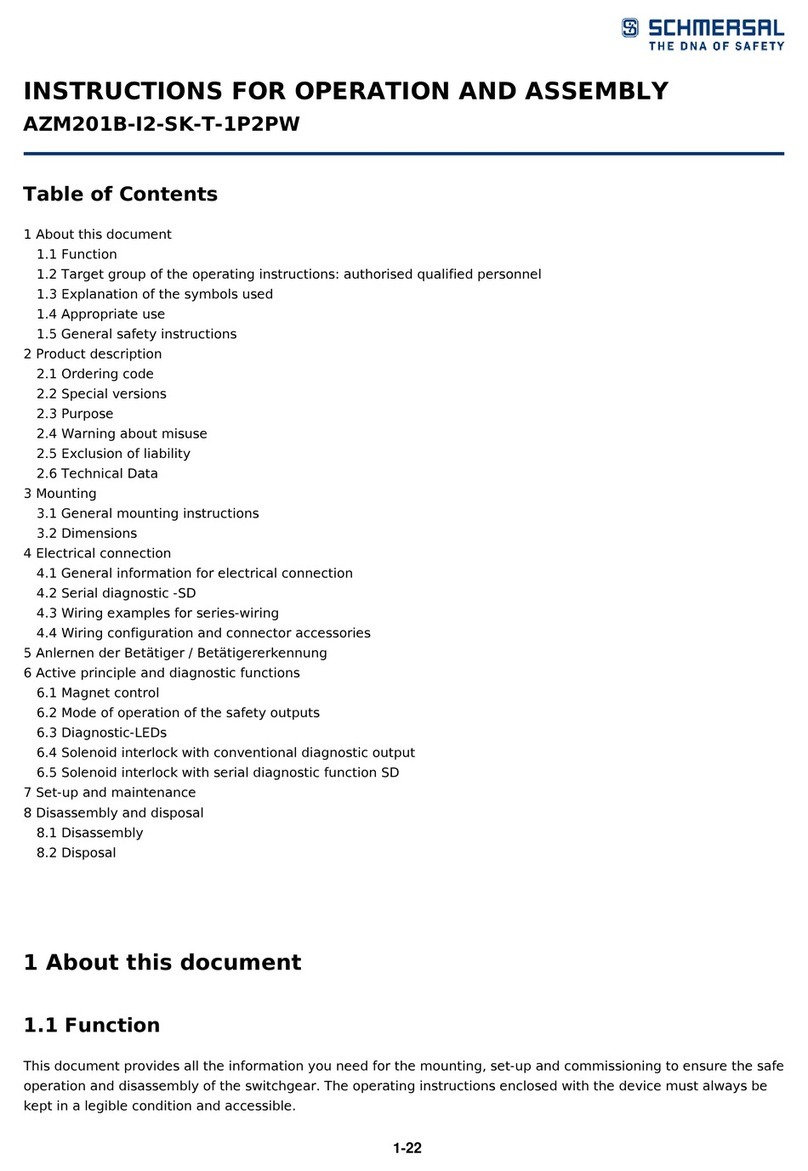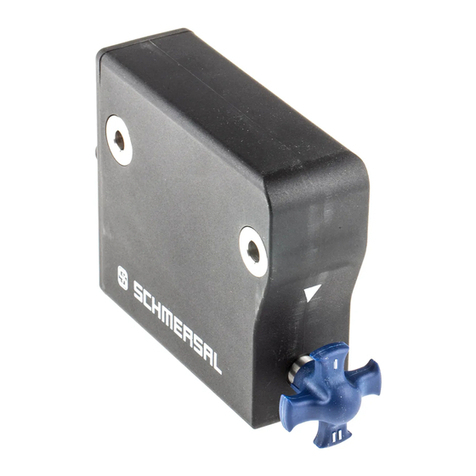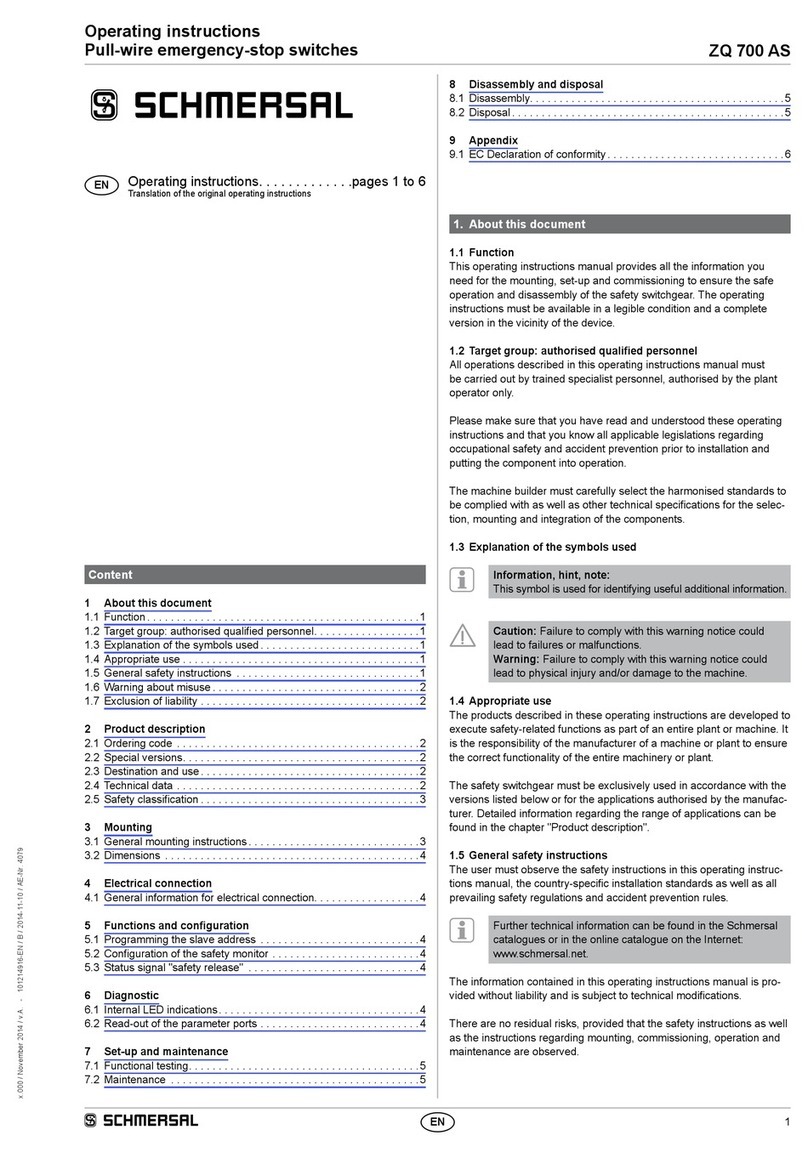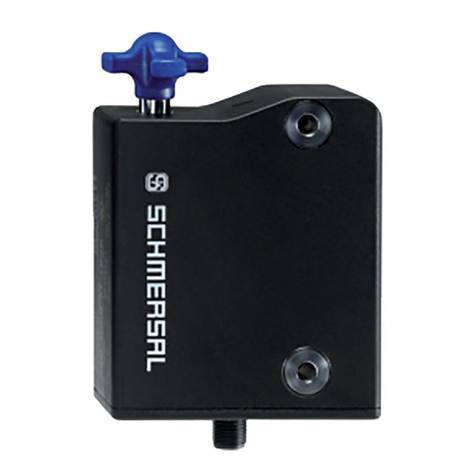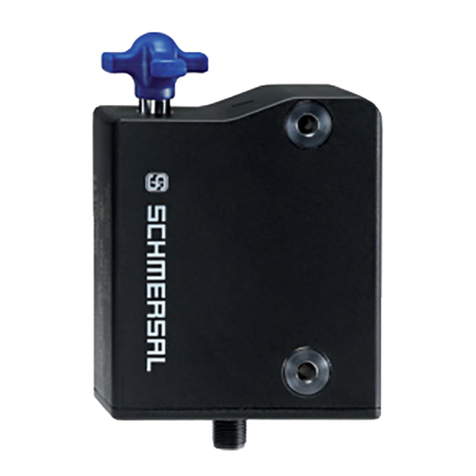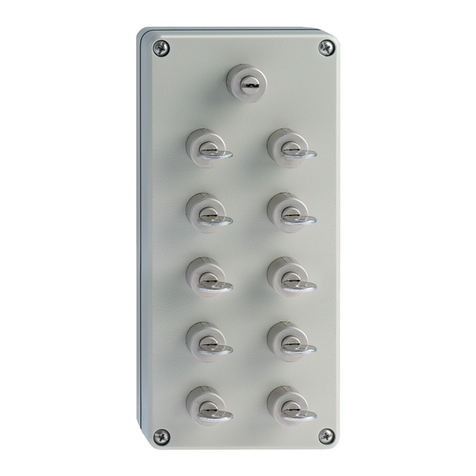
2
Operating instructions
Safety switch TZG
EN
1.6 Warning about misuse
In case of improper use or manipulation of the safety
switchgear, personal hazards or damages to machinery
or plant components cannot be excluded. The relevant
requirements of the standard ISO 14119 must be observed.
1.7 Exclusion of liability
We shall accept no liability for damages and malfunctions resulting from
defective mounting or failure to comply with this operating instructions
manual. The manufacturer shall accept no liability for damages
resulting from the use of unauthorised spare parts or accessories.
For safety reasons, invasive work on the device as well as arbitrary
repairs, conversions and modifications to the device are strictly
forbidden; the manufacturer shall accept no liability for damages
resulting from such invasive work, arbitrary repairs, conversions and/or
modifications to the device.
2. Product description
2.1 Ordering code
This operating instructions manual applies to the following types:
TZG
➀➁
/
➂
No. Option Description
➀
Slow action
P Snap action only 1 NC /1 NO contact
➁
01 Head positioned to the front
02 Head positioned to the left
03 Head positioned to the right
04 Head positioned to the rear
➂
103 1 NC contact / 1 NO contact
110 2 NC contacts
1103 2 NC contact / 1 NO contact
3330 3 NC
Not all component variants, which are possible according to this order
code, are available.
Only if the information described in this operating instructions
manual are realised correctly, the safety function and
therefore the compliance with the Machinery Directive is
maintained.
2.2 Special versions
For special versions, which are not listed in the order code below 2.1,
these specifications apply accordingly, provided that they correspond to
the standard version.
2.3 Purpose
The safety switch has been designed to prevent, in conjunction with the
control part of a machine, movable safety guards from being opened
before hazardous conditions have been eliminated. They are also
suitable for fitting on profile sections and existing equipment.
Safety switches can only be used for applications, in which
the hazardous situation is terminated without delay (e.g. run-
on movements) when the safety guard is opened.
When the safety guard is opened, the NC contacts are positively
opened and the NO contacts are closed.
The user must evaluate and design the safety chain in accordance with
the relevant standards and on the required safety level.
2.4 Technical data
Standards: IEC 60947-5-1; EN ISO 13849-1;
ISO 14119; BG-GS-ET-15
Enclosure: glass-fibre reinforced thermoplastic, self-extinguishing
Actuator: steel
Contact material: Silver
Protection class: IP67
Contact type: change-over with double break Zb,
or 2 NC contacts, or 3 NC contacts,
galvanically separated contact bridges
Switching system: AIEC 60947-5-1; slow action,
NC contact with positive break
Connection: screw terminals
Cable type: solid wire
Cable section: 0,5 … 2,5 mm²
Cable type: stranded wire
Cable section 0,5 … 1,5 mm²,
with conductor ferrules,
Cable entry: M20 × 1,5
Actuating speed: 0.2 m/s
Actuating frequency: max. 1200 operations/h
Mechanical life: > 1 million operations
Ambient temperature: −25 °C … +70 °C
Utilisation category: AC-15, DC-13
Ie/Ue:8 A / 230 VAC; 5 A / 24 VDC
only TZGP: 6 A / 230 VAC; 4 A / 24 VDC
Ui:400 V
only TZGP 250V
Uimp:2.5 kV
Ithe:10 A
Us:24 VAC/DC 110/230 VAC
Max. fuse rating: 10 A gG D-fuse
2.5 Safety classification
Standards: EN ISO 13849-1
B10d (NC contact): 2.000.000
B10d (NO contact) at 10% ohmic contact load: 1.000.000
Service life: 20 years
TF
D
10Dopop
op
n
3. Mounting
3.1 General mounting instructions
3/2 mounting holes are provided for fixing the switch. The safety
switch must not be used as end stop. Any mounting position. The
mounting position however must be chosen so that the components
are protected against soiling and damage. In case of painting activities,
the components must be covered. The supplied fixing material must
be used. If another actuating direction is desired, the four screws of
the actuating head must be loosened. Turn the actuating head in the
desired direction and retighten the screws (tightening torque 0.5 Nm).
The default screws installed in the actuating head can be replaced with
the supplied tamperproof screws.
Mounting of the actuators: See mounting instructions actuators.
Please observe the remarks of the standards EN ISO 12100,
EN 953 and ISO 14119.
The 3-pole variants can only be connected to 2 screw points.
For stability reasons, at least the hatched area shown on the
image must be provided as full contact surface.
